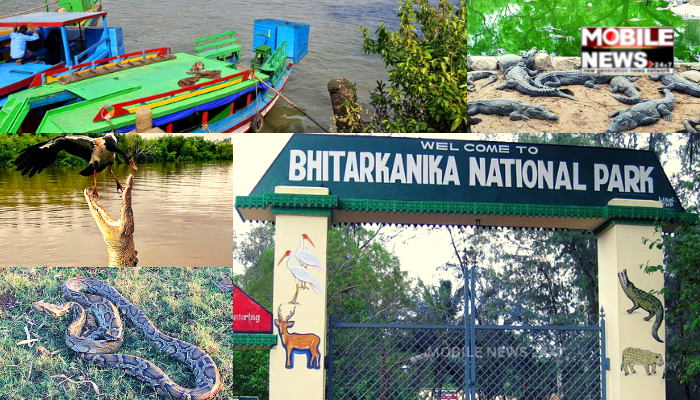
By D N Singh
Heading from Kendrapada fringes towards Bhitarkanika National Park is a different pleasure meandering through myriad facets of nature is itself a learning to enjoy. Either by road or in a boat.

Boarding a boat from Gupti, makes itself to become a mild cruise towards Bhitarkanika core area. Once you anchor at the side line of tidal creek , the world changes.

From a boisterous mundane cacophony into a sublime world reigned by the majestic salt water crocodiles, small to big monitor lizards, spotted deer frolicking around, huge pythons and scary king cobras, monkeys or the mud-keepers amid a mammoth population of red-crabs.

A wonder in itself blended to an unfathomable gravity of nature.
Once one reaches Dangmal in the heart of the core region and get on to seat at the patio of the Dangmala forest bungalow, the serenity around serenades, and the quietness interspersed by some wild notes create an air of splendour which can only be felt but hard to describe in words.
A look at the nearby mangrove, the signature feature of Bhitarkanika National Park spread over 142 sq kms, one can get a good beginning of the sighting of huge monitor lizards, sneaking their lips out, searching for their food.
As the day matures, a few numbers of spotted deer and antelopes can be visible over the bio-mass rich planes right adjacent to the mangrove stretches, feeding themselves on the bio-rich soils which is salty in taste.
Once one is on a boat and out in the creeks, encircling the areas in a serpentine shape, again it is different domain of nature.
That is the tryst with the majestic salt-water crocodiles either inside the water swimming alongside or a majority, in winter, lying on the mud flats basking in the sun, a kind of mechanism when they recharge their energy.

An occasional closer reach of the boat to the mud-flats, they crawl back into the creeks making a big splash in the water and vanish.
Even admitted by the Forest staff that, crocodiles are the flagships species who really remain as the protectors of the National Park.
It was designated on 16 September 1998 and obtained the status of a Ramsar site on 19 August 2002.

It is surrounded by Bhitarkanika Wildlife Sanctuary, which spread over 672 km2 (259 sq mi). Gahirmatha beach and Marine Sanctuary are to the east, separating swamp region and mangroves from the Bay of Bengal. The national park and wildlife sanctuary is inundated by the rivers Brahmani, Baitarani, Dhamra, Pathsala. It hosts many mangove species, and is the second largest mangrove ecosystem in India.
It comes next to the mangrove species of the Sunderbans in West Bengal which is known for the big population of Royal Bengal tigers.

Bhitarkanika’s, if it can be said so, real protectors are the salt-water crocodiles who keep it guarding from human greed and poachers in particular.
Saltwater crocodile, Indian python, black ibis, wild boar, rhesus monkey, chital, darter, cobra, monitor lizard and fishing cats, Bhitarkanka is a treasure house for any biodiversity on earth with a rich food chain and unending pools of nature.
Once you cross over to the other side of the creek, there comes another surprise. Ferocious king cobras can be spotted here and there and, the sight of fishing cats once in a while, on your way to Bagagahan by walk, which is a paradise for the migratory and home birds, mainly from the crane family.
Mangroves are salt-tolerant, complex, and dynamic eco-systems that occur in tropical and subtropical intertidal regions. Bhitarkanika is one such location of rich, lush green vibrant ecosystem lying in the estuarine region of Brahmani – Baitarani. Back in the boat and having a refreshment there in has a different aura and aroma.
As the sun goes down, the magical sparkles created by the rays of the golden setting sun indeed is a visual treat for any one.






